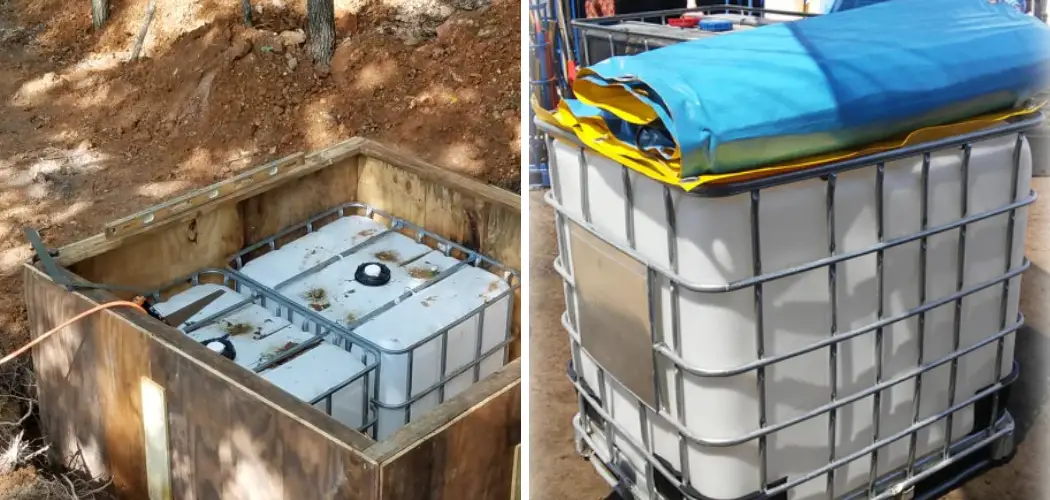Keeping an IBC tote from freezing is crucial, especially in colder climates where temperatures can drop unexpectedly. These large containers are commonly used for storing and transporting liquids, and if they freeze, it can lead to damage not only to the tote itself but also to the contents within.
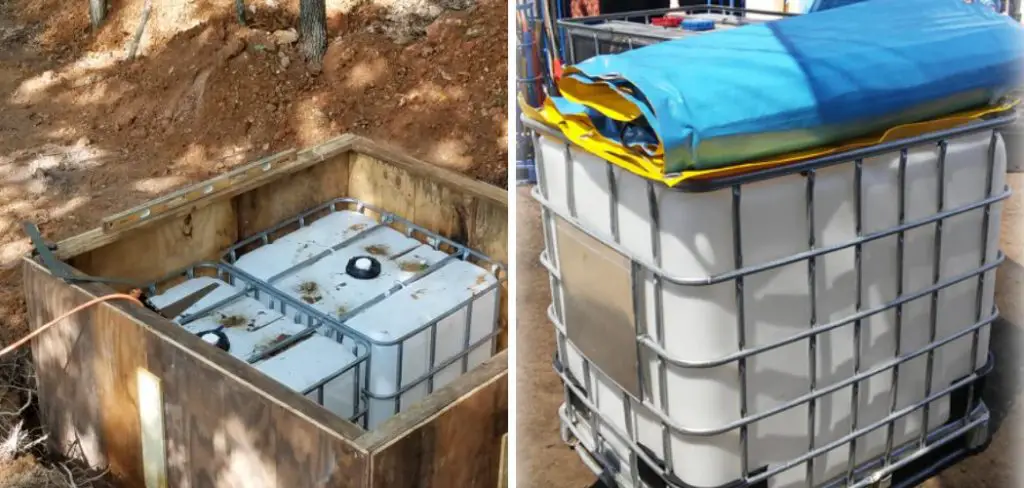
In this guide, we will explore how to keep ibc tote from freezing, ensuring that your liquids remain at optimal temperatures throughout the winter months. By implementing these practices, you can extend the life of your tote and maintain the integrity of your stored substances.
Understanding IBC Totes
Intermediate Bulk Containers (IBCs) are industrial-grade containers designed for the efficient storage and transport of liquids and bulk materials. Typically made from high-density polyethylene (HDPE) and housed in a sturdy metal frame, these totes are durable and stackable, facilitating space-saving storage solutions. IBC totes come in various sizes, with the most common capacity being 275 or 330 gallons.
They are widely used in industries such as agriculture, chemicals, and food processing due to their versatility and ease of handling. Understanding the specifications, features, and best practices for using IBC totes is essential in maximizing their utility while ensuring safety and compliance with regulations.
10 Methods How to Keep Ibc Tote from Freezing
1. Use an IBC Tote Heater
One of the most reliable methods to prevent an IBC tote from freezing is using an IBC tote heater. These heaters are designed to wrap around the tote, providing consistent heat to keep the contents warm. They typically come in various sizes and wattages to accommodate different IBC tote models.
The heating blankets or jackets are easy to install and usually feature adjustable temperature settings, ensuring that you can control the heat depending on how cold it gets. With proper insulation and a tote heater, you can maintain the desired temperature and prevent freezing, even in extreme weather conditions.
2. Install a Heated Enclosure or Insulated Shed
A heated enclosure or an insulated shed is an excellent way to keep an IBC tote from freezing. If you live or work in a region that experiences prolonged cold weather, building a structure around the IBC tote can provide an extra layer of protection against the elements.
Insulating the shed’s walls, ceiling, and floor ensures that any heat generated inside remains contained, minimizing the risk of freezing. Adding a small space heater or an electric heating unit inside the enclosure can further help in maintaining a warm environment for the tote. This method is particularly effective for long-term storage.

3. Add Antifreeze Solutions to the Liquid
For liquids that are not sensitive to additives, adding an antifreeze solution can be an effective way to prevent freezing. Antifreeze lowers the freezing point of water-based liquids, making it suitable for outdoor storage in colder climates. There are various types of antifreeze solutions available, such as propylene glycol, which is commonly used in industrial and agricultural applications.
However, it is important to ensure that the antifreeze is compatible with the contents of the IBC tote. For food-grade or potable liquids, make sure to use a food-safe antifreeze to avoid contamination.
4. Use Insulation Jackets or Blankets
Insulation jackets or blankets provide a simple yet effective way to keep an IBC tote warm. These are typically made from materials like neoprene or thermal insulation, which helps trap heat and prevent cold air from reaching the tote. Insulation jackets are easy to wrap around the tote and can be combined with other heating solutions, such as tote heaters, to enhance their effectiveness.
By preventing heat loss, insulation blankets help maintain the temperature inside the tote, reducing the risk of freezing. This method is especially useful for short-term storage or in moderately cold environments.
5. Use Heat Trace Cables
Heat trace cables, also known as heat tape, can be wrapped around an IBC tote or its associated piping to prevent freezing. These cables work by generating heat along their length, which transfers to the surface they are in contact with. By wrapping these cables around the lower sections of the tote, where freezing is most likely to occur, you can keep the liquid warm enough to prevent solidification.
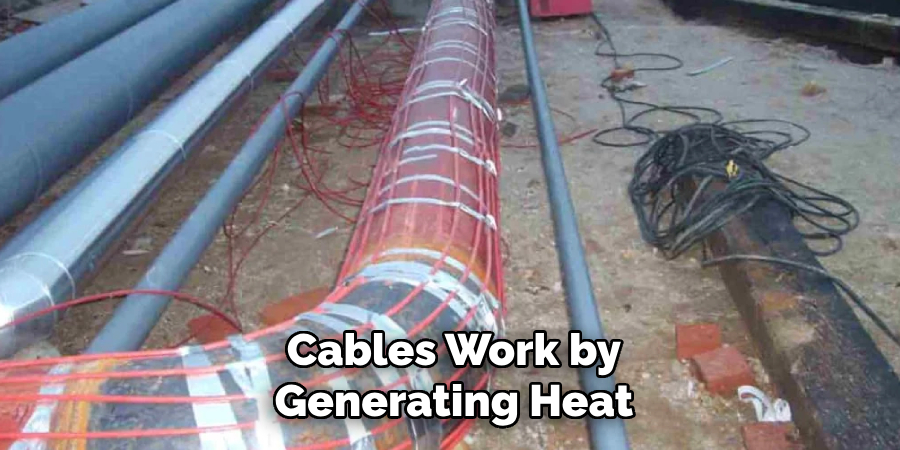
Many heat trace cables come with thermostats or self-regulating features that ensure consistent heating without overheating. This method is particularly useful in areas where temperatures drop below freezing only occasionally.
6. Keep the IBC Tote Elevated Off the Ground
Keeping your IBC tote elevated off the ground can prevent it from coming into direct contact with cold surfaces, which can contribute to freezing. Placing the tote on a pallet or any raised platform reduces the risk of ground frost seeping into the bottom of the container.
Cold air and moisture from the ground are some of the main culprits that cause the contents of a tote to freeze from the bottom up. Elevation allows better air circulation underneath the tote, reducing the risk of ice forming at the base and ensuring that the heat from any other heating method remains effective.
7. Move the IBC Tote Indoors
Whenever possible, moving the IBC tote indoors, such as into a warehouse or garage, can be an effective way to prevent freezing. Indoor spaces are generally warmer than the outdoors, and even an unheated indoor area can offer protection from wind, snow, and freezing rain.
This method can be combined with insulation or heating blankets to further protect the contents of the tote. Indoor storage also prevents any sudden drops in temperature from freezing the tote overnight, offering consistent protection throughout the winter months.
8. Monitor Temperature with a Thermostat
Monitoring the temperature of your IBC tote is essential to ensuring that it remains warm enough to prevent freezing. A thermostat allows you to track the temperature inside the tote or around its exterior, giving you real-time information about whether the heating methods you are using are effective.
Many modern heating solutions, like tote heaters and heat trace cables, come with built-in thermostats that automatically adjust the heat output based on ambient temperatures. By keeping an eye on temperature fluctuations, you can adjust your heating strategies as necessary to maintain optimal conditions.
9. Circulate the Liquid Inside the Tote
Circulating the liquid inside the IBC tote can prevent it from freezing by ensuring that the colder sections of the liquid are continuously mixed with warmer sections. This method is particularly effective if you have access to a pump or agitator that can gently move the liquid without introducing air.
Stagnant liquid is more prone to freezing, especially at the surface and edges, so circulation keeps the temperature more uniform throughout the tote. This method works well when combined with heating solutions, as it distributes the heat more evenly across the contents.
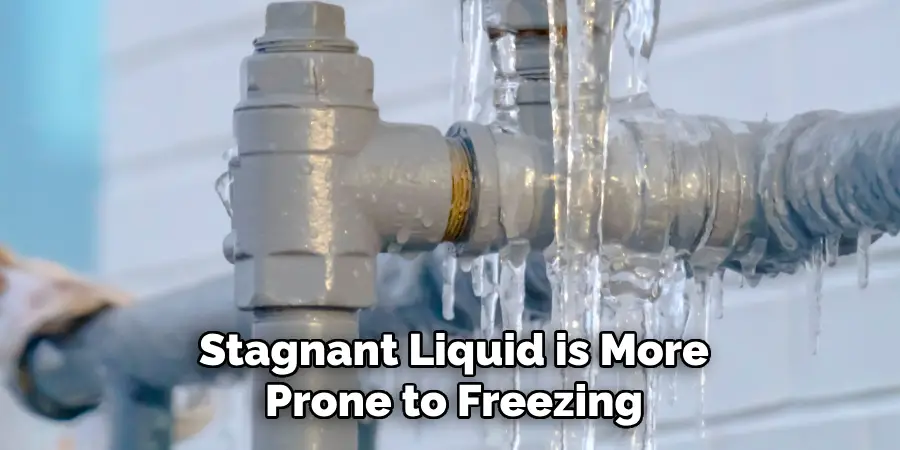
10. Add Insulation to the Piping and Valves
If your IBC tote is connected to external piping, valves, or pumps, insulating these components is just as important as insulating the tote itself. The liquid in the pipes is often the first to freeze, which can create blockages that compromise the entire system. Wrapping the pipes and valves with thermal insulation or heat trace cables helps keep them warm and prevents freezing.
In extreme cold conditions, uninsulated pipes can lead to frozen blockages that may damage the plumbing system or render the tote unusable. Insulating these external components ensures that the liquid flows smoothly, even in freezing temperatures.
Things to Consider When Preventing Freezing in IBC Totes
- Assess Environmental Conditions
Understand the specific climate and weather patterns of your location. Regions that experience prolonged cold spells may require more robust protective measures compared to those with milder winters.
- Material Compatibility
Ensure that any insulation or heating solutions used are compatible with the materials contained within the IBC tote. Certain heating methods may not be suitable for all substances and could lead to degradation or contamination.
- Safety Precautions
When using electrical heating elements such as heat trace cables, it’s essential to follow safety guidelines to prevent electrical hazards. Regularly inspect the equipment for wear and tear and ensure that installation complies with local codes.
- Cost vs. Benefit Analysis
Evaluate the cost implications of various heating and insulation methods in relation to the potential loss from freezing issues. Investing in efficient solutions may save money in the long run by preventing damage to the contents.
- Maintenance and Monitoring
Regularly check and maintain all heating and insulation systems in use. This ensures that they are functioning correctly and effectively, avoiding any unexpected failures during critical cold periods.
- Plan for Power Outages
In colder climates, power outages can increase the risk of freezing. Consider backup heating sources, like portable heaters or battery-operated solutions, to ensure continuous warmth during emergencies.
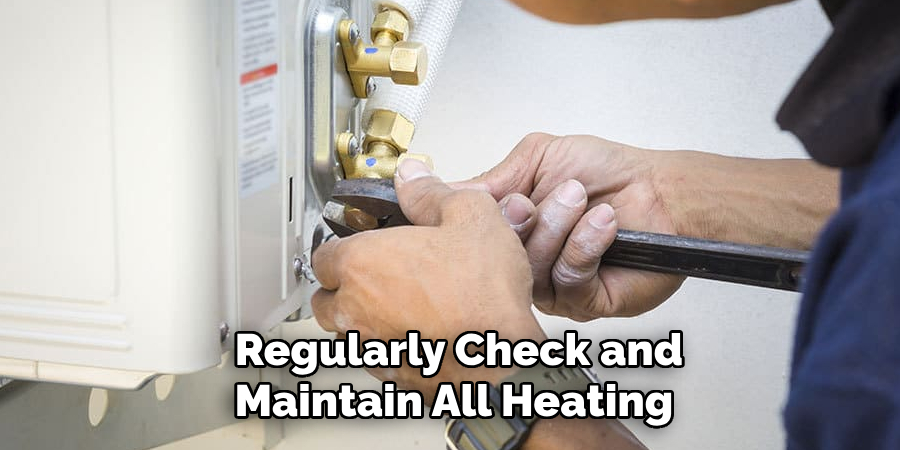
Conclusion
In conclusion, protecting your IBC tote from freezing during harsh winter conditions is crucial for maintaining the integrity of its contents. By implementing various strategies such as using antifreeze solutions, insulation methods, and heat trace cables, you can significantly reduce the risk of freezing.
Additionally, keeping the tote elevated, moving it indoors, monitoring the temperature, circulating the liquid, and insulating external piping will further enhance your efforts. Thanks for reading, and we hope this has given you some inspiration on how to keep ibc tote from freezing!

